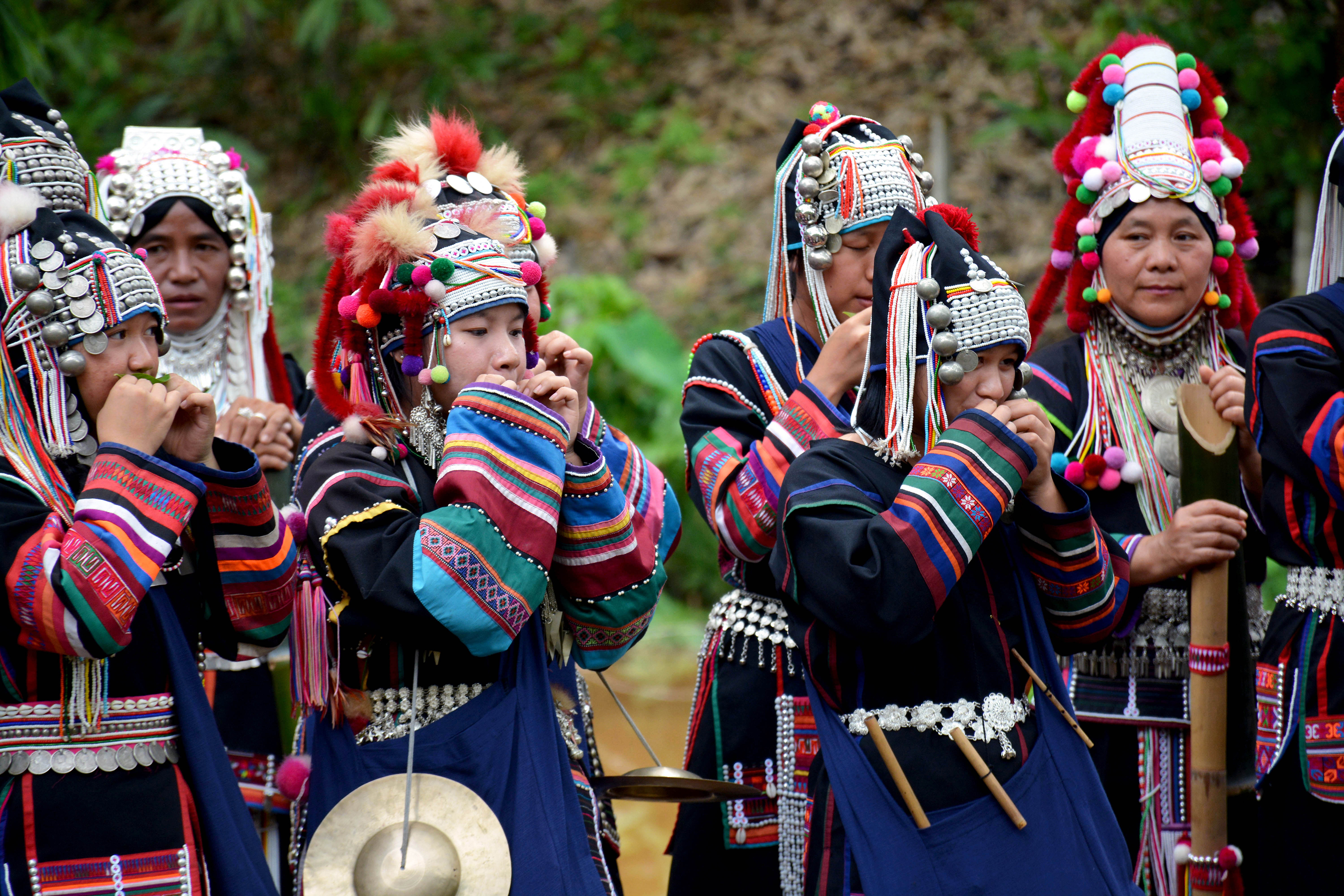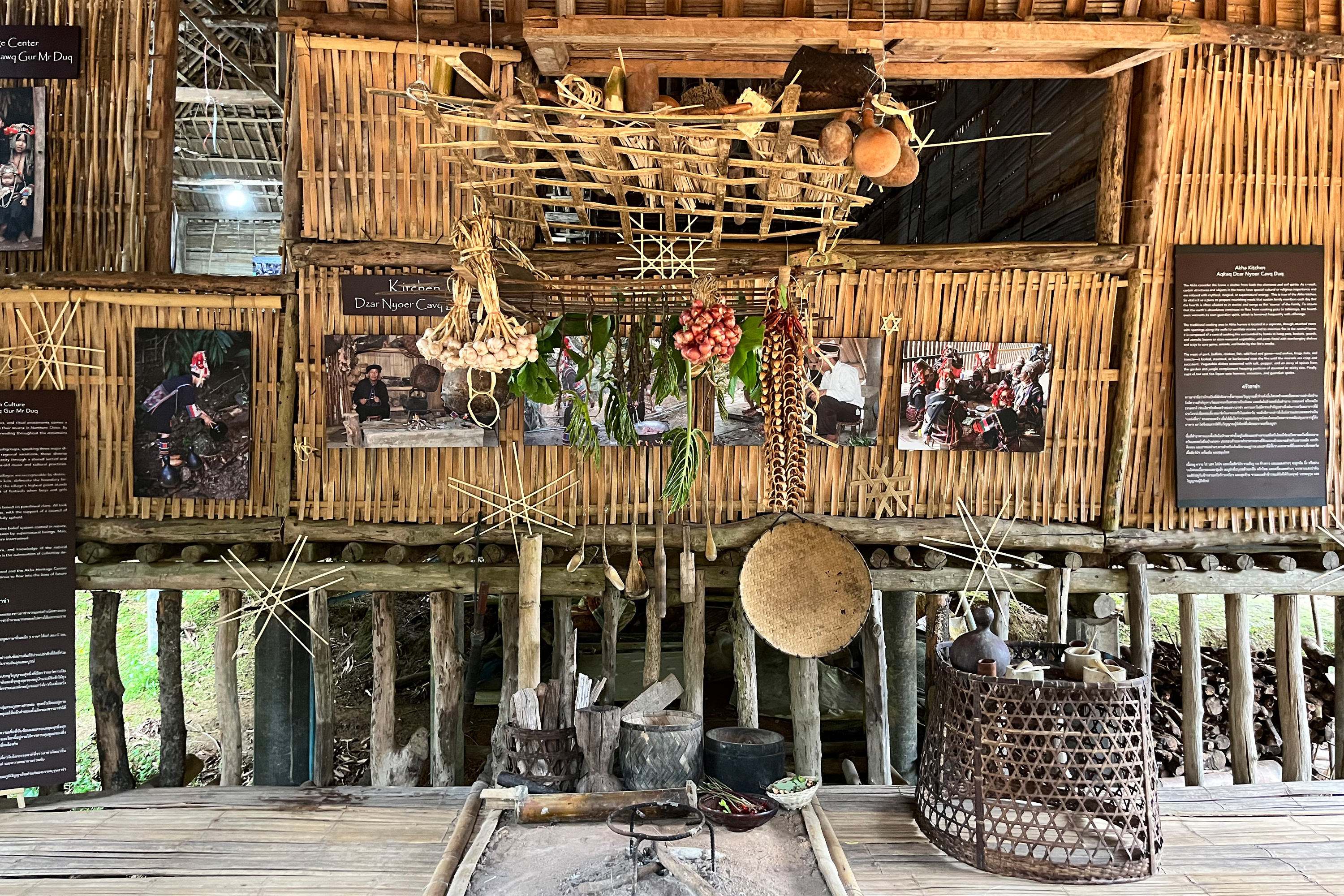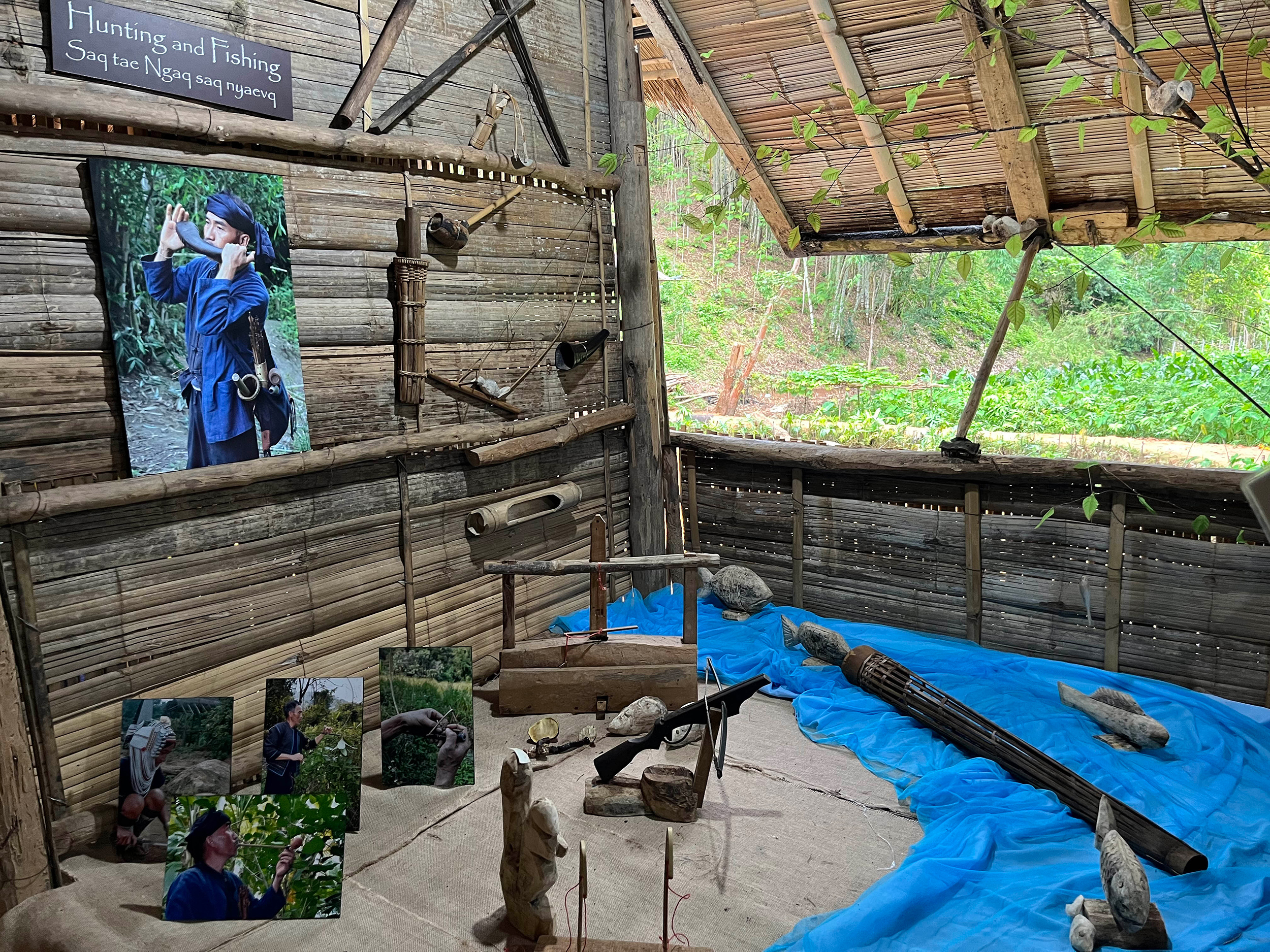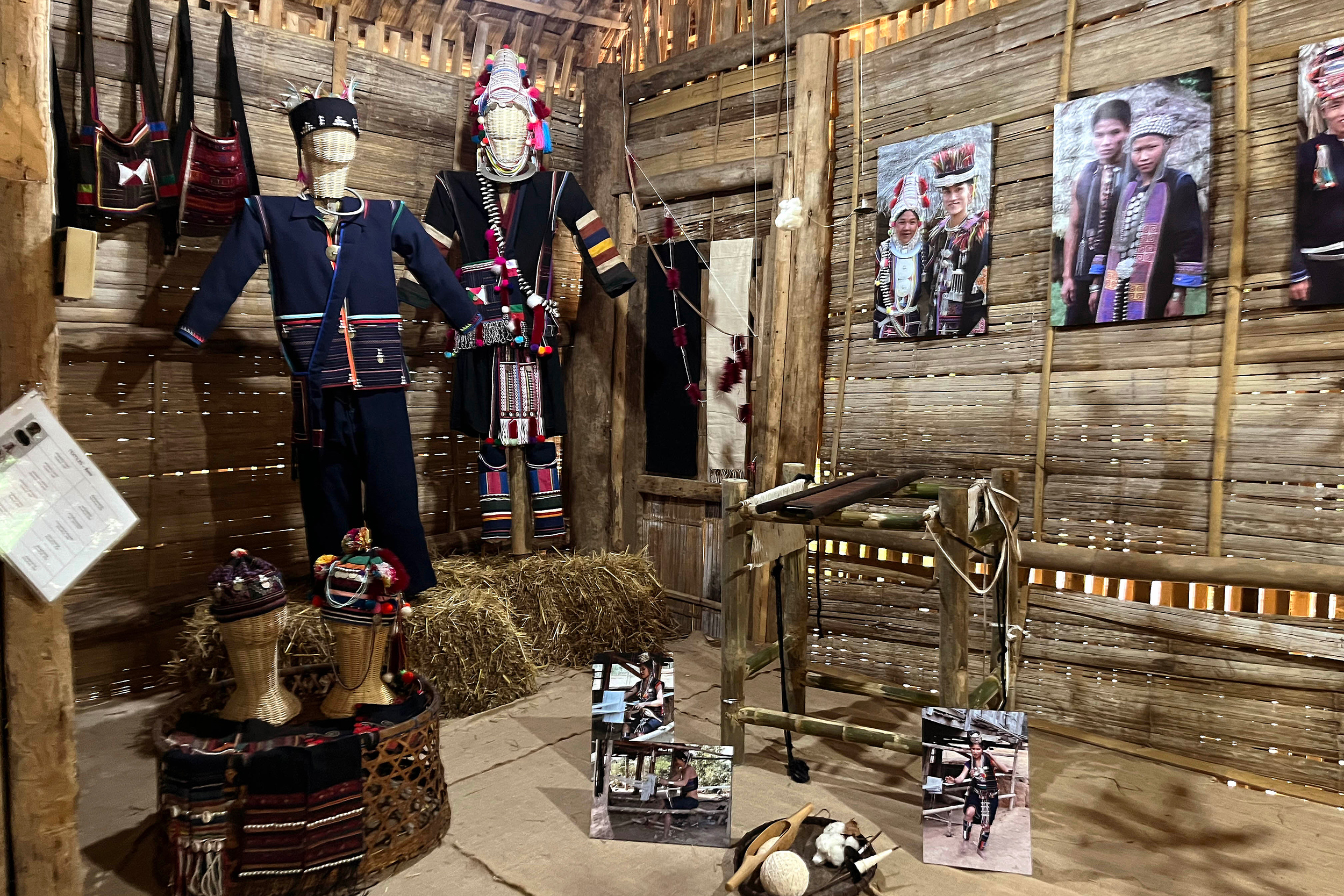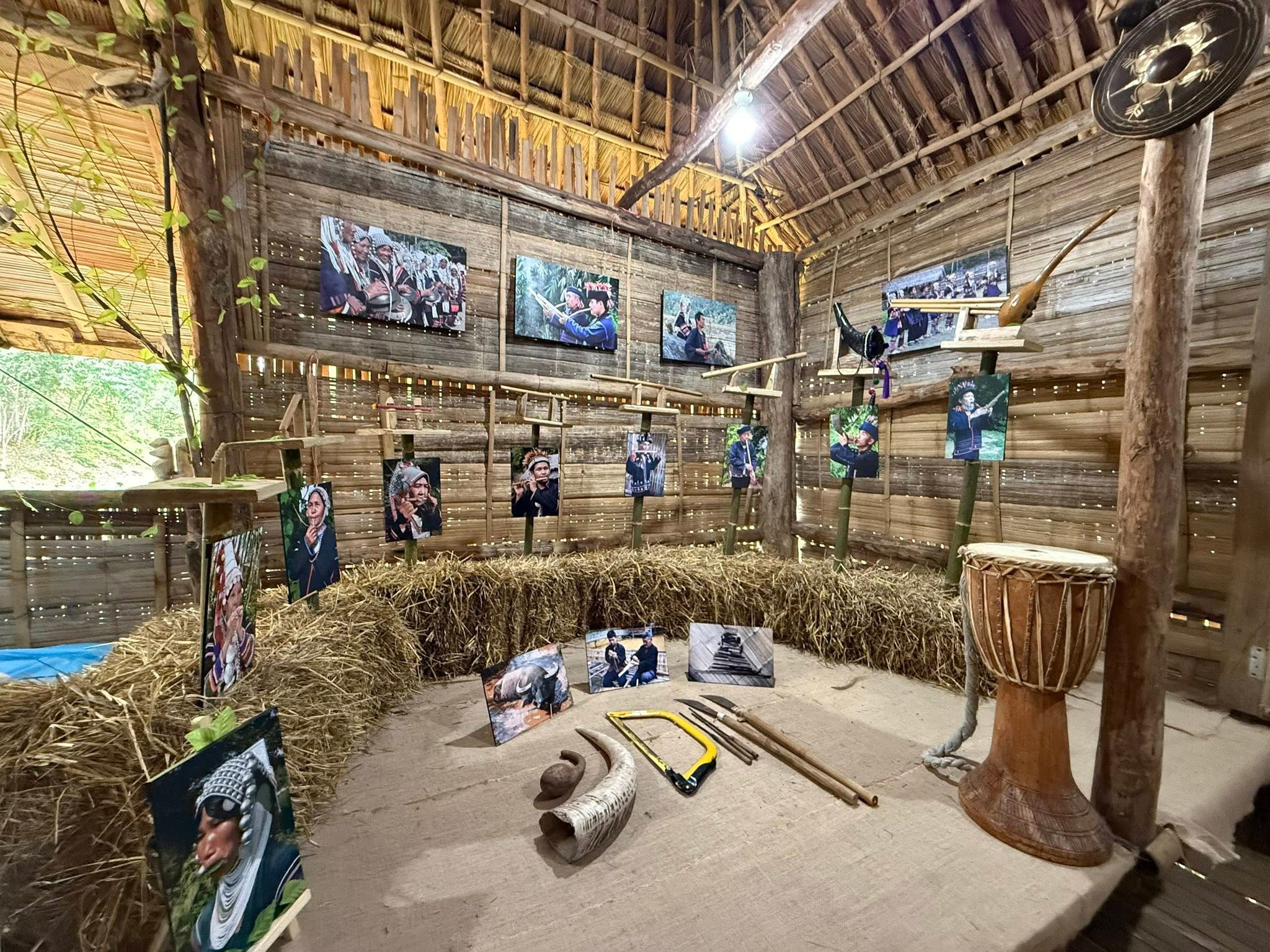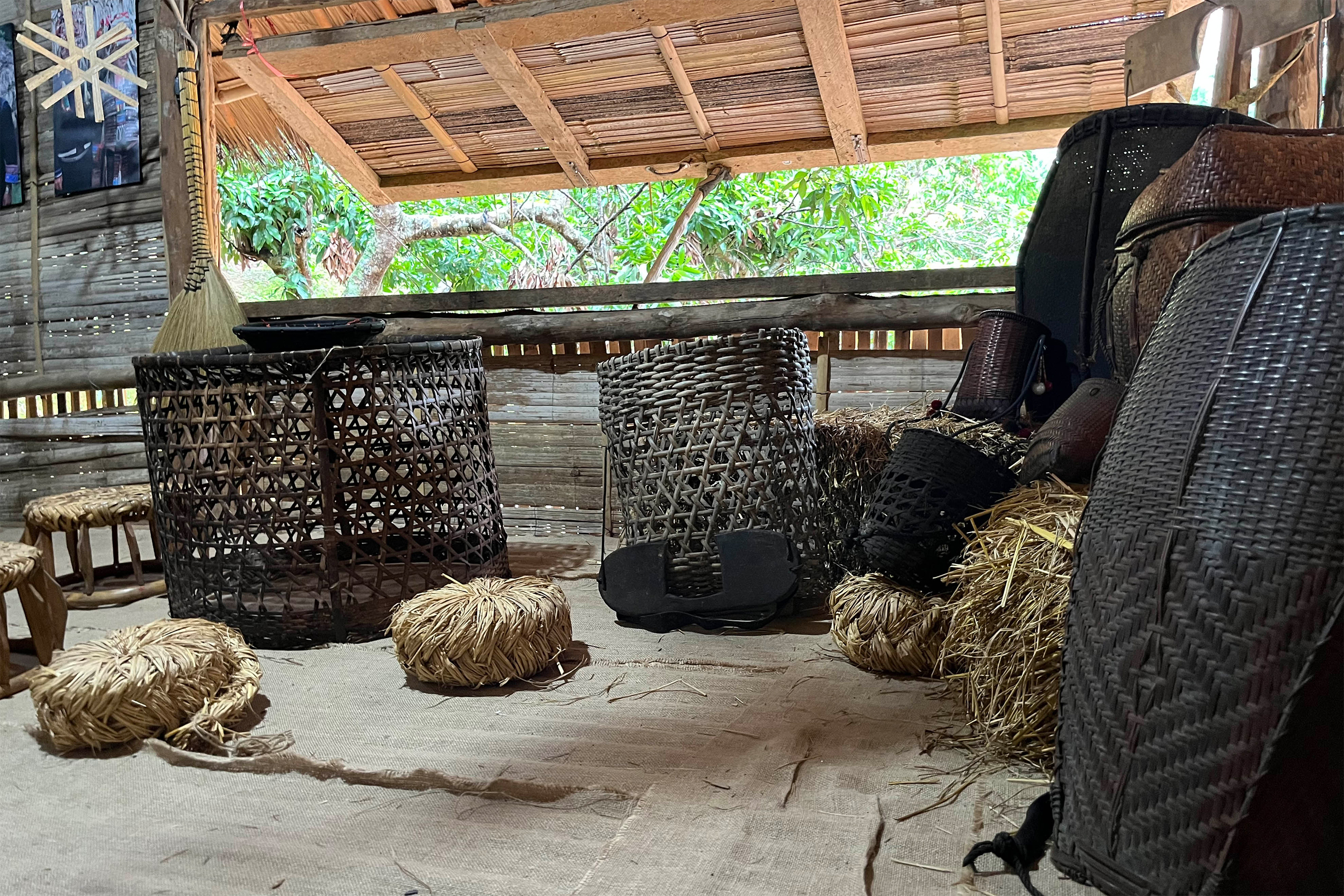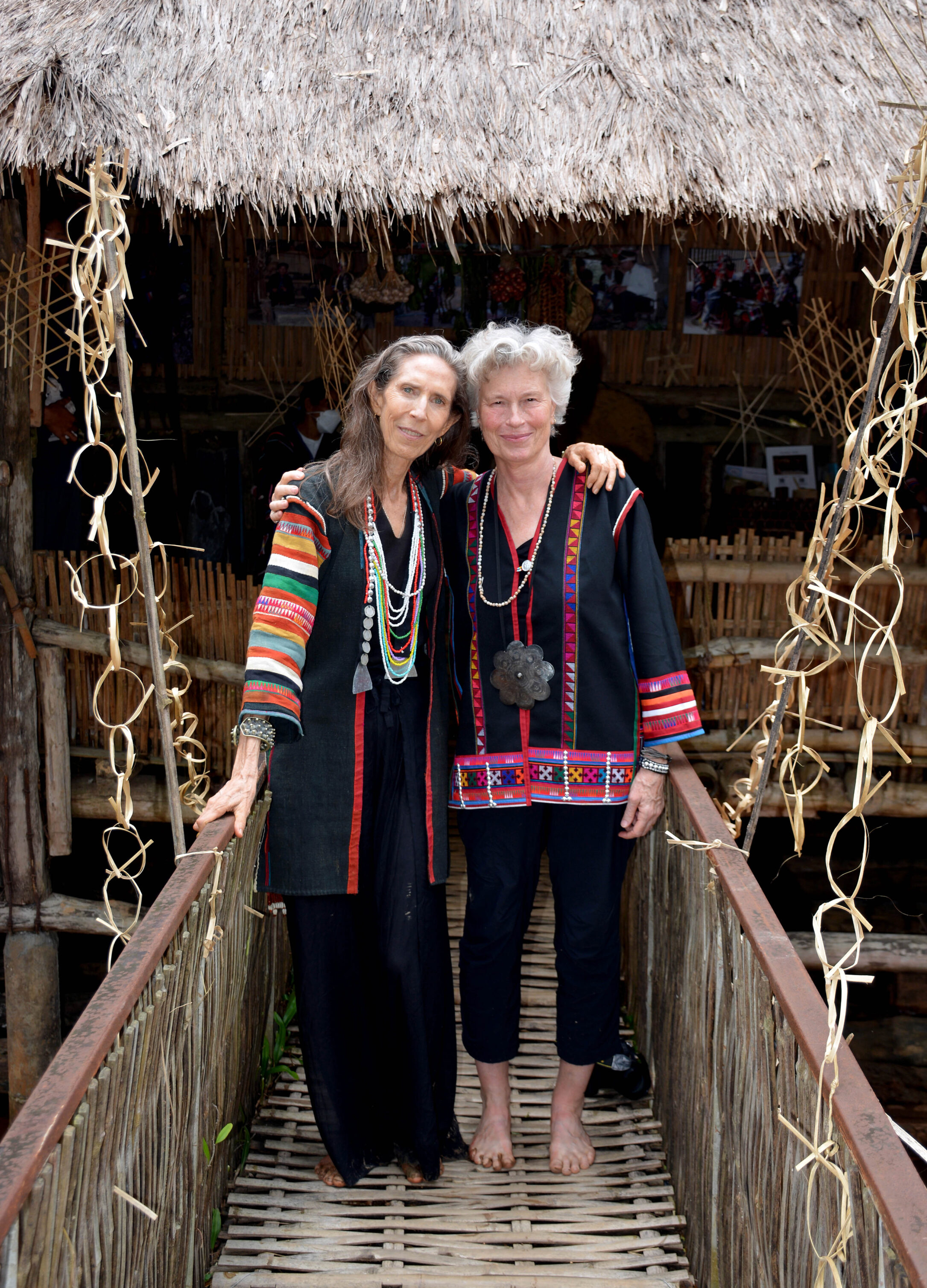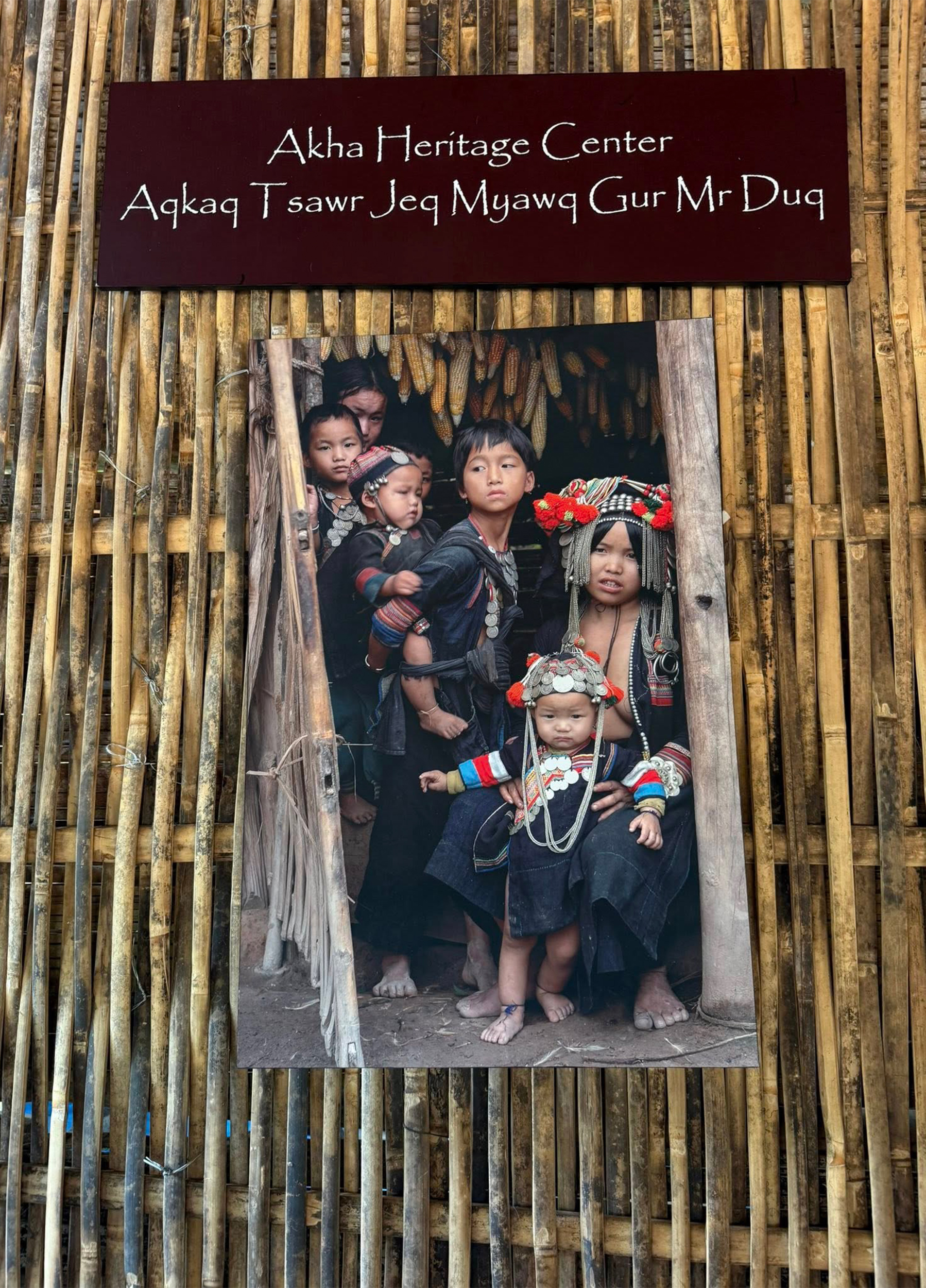Akha Heritage Center
Welcome to Ban Saen Suk, in northern Thailand! We are so excited to have you join us on the occasion of our Akha Oral Tradition School Concert and the Akha Heritage Center Launch. Please follow along as we observe in song and on a virtual curator walk the five innovative exhibits rooted in traditional Akha culture that were developed by our Akha students.
Celebrating with Music
What better way to celebrate Material Culture than with Oral Culture? It was with great fanfare that Akha Students, Teachers, Leaders, and the Community of Ban Saen Suk welcomed visitors from far and near to the vernissage of the Akha Heritage Center on 29 June 2005.
To celebrate this special event, students of the Akha Oral Tradition School regaled all in attendance with traditional Akha music – performed in song and on musical instruments made of buffalo horns, bamboo, wood, and leaves. On this, the eve of our second-year anniversary, what a splashy lead-up to the cultural wonders that await.
Introduction
Akha Culture
From an age-old body of epic songs, poems, stories, and ritual enactments, comes a two-thousand-year account of Akha migrations from their source in Northern China to the mountains of Myanmar, Thailand, Laos, and Vietnam. Yet despite variations in habitat, patois, attire, and secular practices, the thirty subgroups that have emerged maintain an unmistakable sense of Akha identity through a shared sacred oral canon.
The treasure trove of material culture, oral traditions, and knowledge of the natural world that the Akha have amassed over time and place is the culmination of collective devotion, creativity, and effort.
It is the resolution of Cultural Crossroads Asia, sponsor of the Akha Oral Tradition School and the Akha Heritage Center, that such time-honored wisdom of Akha ancestors continues to flow into the lives of future Akha generations. May the circle be unbroken.
Akha Hearth Exhibit
The Akha consider the home a shelter from both the elements and evil spirits. As a result, certain structures and objects in the home have special cultural or religious importance and are imbued with mythical, magical, or supernatural energy.
This is true of the Akha hearth. So vital is it as a place to prepare nourishing meals that sustain family members each day that the hearth is often alluded to in stories and songs as the 'source' of the family. To ensure that the earth's abundance continues to flow from cooking pots to tabletops, the hearth even warrants its own guardian spirit, who is honored frequently with offerings.
Akha Hunting and Fishing Exhibit
While the Akha are primarily an agrarian people, they supplement their diet with the domestic animals they raise and the wild animals they hunt and fish using a variety of techniques.
So indispensable are knives to daily Akha life that Akha men rarely leave the village without a knife tied to their waistband.
Akha hunters are keen marksmen with flintlock musket and crossbow as they track large game—bear, wild boar, barking deer, and wild cats. To attract jungle birds, Akha boys and men play their bamboo bird callers before taking aim with their slingshot. The Akha have also devised a variety of ingenious traps to catch birds in trees, in bushes, and on the ground.
Along with the common fishing rod, rivers teem with Akha fish traps made of bamboo and woven rattan in a conical shape so that the fish that swim through the opening are unable to turn back and escape.
Akha Textile Exhibit
With over thirty distinct subgroups in the Akha diaspora, it is inevitable that the dress of each displays variations that reflect its unique lived experience – centuries-old journeys, environment, and history. Still, there is a 'common thread' between these individual groups, as the garments they weave by hand and wear in all seasons instantly identify them as Akha.
In all Akha groups, homespun cotton, dyed deep indigo, is fashioned into loose-fitting tunics, which are adorned with multiple rows of colorfully embroidered and appliquéd motifs, and festooned with coins, buttons, glass bead tassels, pompoms, cowrie shells, and red tufted chicken feathers.
The Akha layer their garments with voluminous amounts of silver jewelry—neck rings, bracelets, rings, grooming tools, and large buckles, ornately engraved. Yet, no single piece in a woman's attire is more spectacular than her soaring headdress, a magnificent 'crown,' adorned with shimmering chains, orbs, coins, and pendants, a true beacon of Akha identity.
Akha Music Exhibit
The Akha cherish a vibrant oral tradition and revere the ancestors who faithfully memorized and passed down age-old accounts of their story through melody, rhythm, and ritual enactments. For the Akha, music has served as 'song lines' that stretch back millennia, recreating legends, life lessons, history, and identity.
The Akha vocal repertoire is remarkable in its scope, addressing the full spectrum of life experiences and wisdom. Long sacred oral texts are sung by Akha spirit intermediaries to align people to their ancestors, deities, and moral compass. Long narrative songs are tied to the nine phases of rice cultivation. Secular songs express deep human emotions that guide the Akha through the arc of life.
The Akha have also created a wealth of instrumental timbres equally represented by winds, strings, and percussion. The dulcet tones of flutes, reeds, mouth harps, leaves, and lutes convey all feelings of the human heart, while the pulse of drums, cymbals, gongs, and bamboo beaters carry far and wide to call villagers and spirits and to animate festival dancing.
Akha Basketry Exhibit
The art of weaving strips of cane and rattan into functional objects is on full display in every Akha home. These appear as trays, mats, mesh bags, nets, stools, tables, harvesting tools, and vessels that hold sewing materials and store clothing.
The primary woven form, however, appears in a profusion of baskets that serve as carriers in every phase of food production: planting, harvesting, winnowing, shucking, drying, transporting, collecting firewood, and storing provisions.
The Akha have developed their signature basketry style over generations using distinctive weave, shape, and design as determined by the basket's function, as plant fibers are interlaced in variations of tight and loose patterns.
Craftsmen fashion baskets in an upward motion from base to foot to upper rim, bending the ribs, 'spokes,' to meet at the top circlet, using one of four weaving techniques—coiling, plaiting, twining, and wicker.
We welcome you to visit the Akha Heritage Center in person.
The Akha youth would be thrilled to show you around.
Please contact us at

